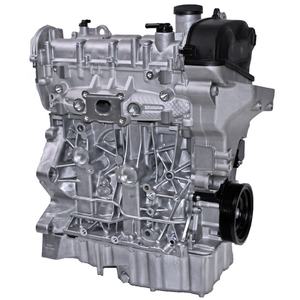Comprehensive Evaluation of a Subcompact Cars and truck's Powertrain Capabilities
In the world of vehicle design, the powertrain of a subcompact auto stands as a crucial nexus where performance, efficiency, and advancement assemble. From the engine's relentless search of ideal performance to the transmission's smooth choreography of power distribution, every component plays a critical function in defining the general driving experience.
Engine Performance Evaluation
In examining the engine performance of the subcompact auto, a detailed analysis exposes its efficiency and power outcome under various driving problems. The subcompact vehicle's engine, a crucial element of its powertrain system, shows commendable efficiency metrics. The engine's efficiency is remarkable, as it optimizes gas consumption without jeopardizing power delivery. Under typical driving problems, the engine operates efficiently, showcasing an equilibrium in between performance and fuel economy.
In addition, when subjected to extensive testing circumstances such as high-speed velocity or uphill climbs up, the engine demonstrates strength and responsiveness. Its power result remains constant, supplying appropriate velocity when required. The subcompact vehicle's engine is tailored to satisfy the needs of metropolitan driving, where fast velocity and nimble ability to move are essential.
Additionally, the engine's style integrates contemporary technologies that improve its efficiency attributes. Functions like turbocharging or variable shutoff timing add to enhanced power shipment and torque, improving the general driving experience. Finally, the engine performance of the subcompact automobile highlights its ability to deliver trusted and reliable power outcome across various driving conditions.
Transmission Efficiency Assessment
Examining the subcompact vehicle's transmission effectiveness entails evaluating its performance in sending power seamlessly across different driving problems. The efficiency of a transmission system is crucial as it directly influences the general performance and gas economic climate of the automobile. In examining transmission effectiveness, elements such as gear proportions, shift timing, and the smoothness of gear changes are considered. A well-designed transmission system should efficiently provide power from the engine to the wheels while lessening energy losses.
One common approach made use of to review transmission performance is with dynamometer testing, where the power output from the engine is measured at the input and result shafts of the transmission. Disparities in between input and outcome power can indicate the degree of performance of the transmission system. Furthermore, real-world driving tests are carried out to evaluate just how the transmission executes in functional situations. By examining these elements, engineers can determine locations for improvement and maximize the transmission system for better general performance and efficiency.
Fuel Efficiency Evaluation
The analysis of the subcompact auto's fuel performance involves a detailed evaluation of its usage rates under different driving problems. Gas effectiveness is an essential consider examining the overall performance and cost-effectiveness of a vehicle. By determining the amount of fuel consumed per unit distance took a trip, normally expressed as miles per gallon (MPG) or liters per 100 kilometers (L/100 kilometres), the performance of the subcompact auto's powertrain can be identified.

In addition, innovations in technology, such as hybrid systems, regenerative braking, and automatic start-stop systems, have considerably boosted fuel performance in contemporary subcompact vehicles. Manufacturers remain to enhance and introduce powertrain components to enhance gas efficiency while fulfilling performance needs and ecological laws. Evaluating a subcompact automobile's fuel efficiency gives useful understandings for consumers my sources looking for lasting and cost-effective transportation remedies.
Velocity and Handling Assessment
An integral facet of assessing the efficiency capacities of a subcompact automobile hinges on analyzing its acceleration and taking care of qualities. Acceleration is vital as it identifies just how rapidly the vehicle can reach desired rates, impacting general driving experience and maneuverability in different website traffic conditions. opel corsa engine. Subcompact automobiles are often favored for their nimbleness and dexterity, making acceleration from dead stop and throughout overtaking maneuvers crucial elements to take into consideration
When it concerns managing, a subcompact car's capability to browse corners, maintain stability at broadband, and provide a responsive guiding feeling are critical. Limited city roads and winding roadways call for precise managing to make certain chauffeur self-confidence and safety and security. Aspects such as suspension tuning, weight circulation, and tire grasp play substantial roles in identifying a subcompact cars and truck's total handling expertise.

Powertrain Components Introduction
Upon diving right into the intricacies of a subcompact automobile's efficiency, a thorough evaluation of its powertrain parts is essential to comprehend the lorry's mechanical underpinnings. The powertrain of a subcompact automobile usually is composed of the engine, transmission, driveshaft, differential, and axles. Recognizing just how these components function with each other is important in analyzing a subcompact car's general efficiency, efficiency, and driving dynamics.
Conclusion
Finally, the subcompact auto's visit this site powertrain capacities have actually been extensively examined in regards to engine performance, transmission efficiency, fuel performance, handling, and velocity. The detailed testimonial highlights the importance of each part functioning together seamlessly to supply ideal efficiency. Generally, the powertrain elements of the subcompact vehicle see here have been located to be efficient and healthy, making it a dependable selection for motorists seeking a portable and fuel-efficient automobile.
In the world of automobile design, the powertrain of a subcompact cars and truck stands as an important nexus where innovation, effectiveness, and efficiency merge.In examining the engine performance of the subcompact auto, an extensive evaluation reveals its effectiveness and power result under different driving conditions.Examining the subcompact vehicle's transmission effectiveness entails evaluating its efficiency in sending power effortlessly throughout various driving conditions. Recognizing just how these components work together is important in evaluating a subcompact vehicle's general performance, effectiveness, and driving dynamics.In conclusion, the subcompact auto's powertrain abilities have been completely analyzed in terms of engine efficiency, transmission performance, fuel effectiveness, handling, and velocity.